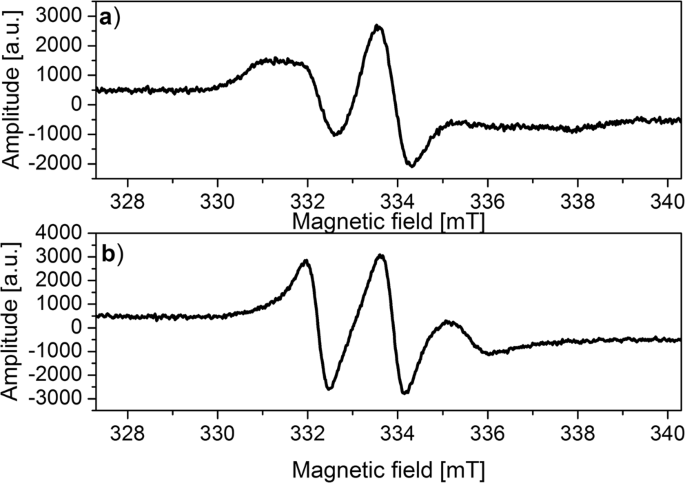
These results therefore highlight the sensitivity of the thin-layer sample holders employed in HiPER for spin-labeling studies of biological macromolecules at high fields, where applications can extend to other systems that are facilitated by the modest sample volumes and ease of sample loading and geometry. For sample volumes of ∼50 μL, concentration sensitivities of 2-20 μM were achieved, representing a ∼10-fold enhancement compared to a cylindrical TE 011 resonator on a commercial Bruker W-band spectrometer. Here, we examine the sensitivity of a non-resonant thin-layer cylindrical sample holder, coupled to a quasi-optical induction-mode W-band EPR spectrometer (HiPER), for continuous wave (CW) EPR analyses of: (i) the aqueous nitroxide standard, TEMPO (ii) the unstructured to α-helical transition of a model IDP protein and (iii) the base-stacking transition in a kink-turn motif of a large 232 nt RNA. EPR spectra of Het-s fibrils were also recorded on a paramagnetically diluted sample comprising a 1:9 ratio of paramagnetic MTSL to diamagnetic MTS-labeled Het-s to. However, low concentration sensitivity remains a roadblock for studying aqueous samples at high magnetic fields. Room temperature CW EPR spectra were recorded on a Bruker EMX spectrometer at X-Band with a scan width of 100 Gauss using an HS cavity and an incident microwave power of 20 mW. EPR showed that the PLB cytoplasmic domain exhibits two resolved conformations, a tense T state that is ordered and a relaxed R state that is dynamically disordered and extended. The spectra were recorded at room temperature at microwave power of 20.0 mW, modulation amplitude of 1.0 G, a time constant of 60 ms, and receiver gain of 60.0 dB. TOAC-PLB showed normal inhibitory function, which was reversed by phosphorylation at Ser16 or by micromolar Ca 2+. X-band DEER of Tau-187 G272C/S285C labeled with maleimide-TEMPO (a standard. Continuous-wave electron paramagnetic resonance (CW-EPR) spectra were recorded using an E500 Elexsys Bruker spectrometer operating at 9.09.5 GHz. Unit of measurement : SI: mol/L The concentration may also be. various experiments and Stefan Stoll for help with simulating EPR spectra.

It is defined as the number of moles in a solution. Typical EPR parameters for radical generation were a 4 G modulation amplitude with a modulation frequency of 100 kHz, a receiver gain of 60, and an.

What is the molarity This is the same with molar concentration and represents the concentration of a solute in a solution. EPR experiments of TEMPO radical consumption under heating conditions were performed on a Bruker Elexsys E 500 EPR spectrometer with a Bruker Super-High Sensitivity Resonator (SHQE cavity).

High-field, high-frequency electron paramagnetic resonance (EPR) spectroscopy at W-(∼94 GHz) and D-band (∼140 GHz) is important for investigating the conformational dynamics of flexible biological macromolecules because this frequency range has increased spectral sensitivity to nitroxide motion over the 100 ps to 2 ns regime. Concentration expressed in either molar, milimolar, micromolar, nanomolar, picomolar or femtomolar.


 0 kommentar(er)
0 kommentar(er)
